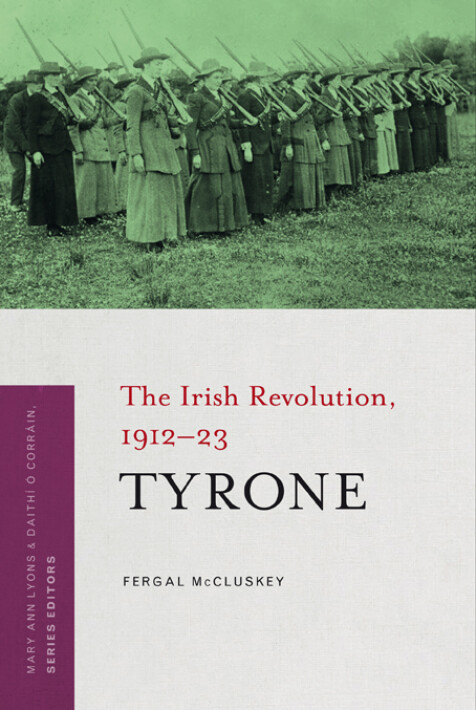Tyrone
The Irish Revolution, 1912–23
Fergal McCluskey
During the period 1912–23, Tyrone was at the centre of the conflict between nationalism and unionism, the evolution of partition and the emergence of two Irish governments. The fate of Tyrone shaped that of Ireland itself. McCluskey has produced the first comprehensive and meticulously researched study of Co. Tyrone during the Irish Revolution. He offers fresh perspectives on how Tyrone men and women engaged in a range of unionist, nationalist, republican and trade union activities. Intent on resisting home rule, the county’s sizable unionist minority, led by the local aristocracy and back-boned by the Orange Order, mustered eight thousand members of the UVF. The forced acceptance of partition in 1914 shattered nationalist confidence and apparent unanimity. This occasioned a dramatic reorientation of nationalism in Tyrone as Sinn Féin eclipsed the Irish Parliamentary Party. The nature of the two-year conflict between IRA and the Ulster Special Constabulary, a force based firmly on the UVF, is carefully analysed by McCluskey. The work charts the prominence of Tyrone during the Anglo-Irish Treaty negotiations and examines Michael Collins’ incongruous attempts to achieve a middle ground between the treaty and the republic through the abortive joint-IRA northern campaign of 1922. By this time, Tyrone’s position under a northern administration had solidified. The book concludes that the British government’s stance on Tyrone confirmed its role as an imperial power determined to bolster unionism and thwart the republican demand. Richly detailed, this ground-breaking study represents essential reading for anyone seeking to understand the Irish revolution.
Part of The Irish Revolution, 1912–23 series (Mary Ann Lyons & Daithí Ó Corráin, series editors)
Fergal McCluskey holds a PhD from Queen's University Belfast and is author of Fenians and Ribbonmen: the development of Republican politics in east Tyrone, 1898–1918 (2012). He now teaches at Coláiste Feirste.

